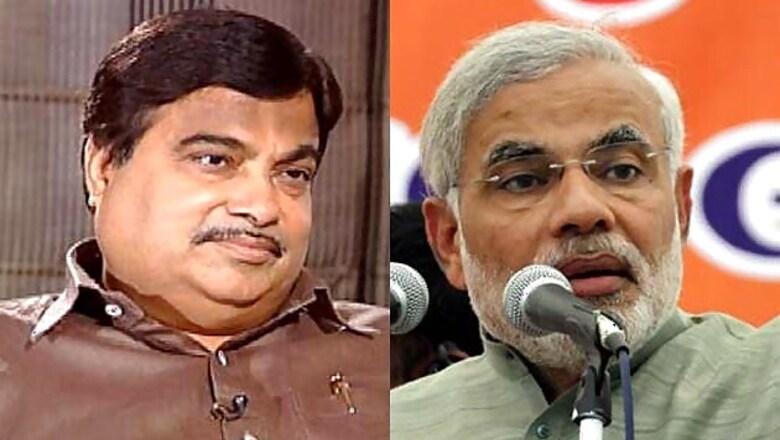
views
New Delhi: While India stares at an economic crisis, dipping GDP growth rate, high inflation, rampant corruption and a general aversion towards the political class, the two major political alliances offer very little hope of redeeming the situation, busy as they are firefighting and trying to set their respective houses in order.
The Congress-led UPA, since storming back to power in 2009, has lurched from one crisis to another while genuflecting before demanding and belligerent partners. On the other hand the BJP-led NDA, which is the principal opposition,
has not been able to put the government on the mat due to infighting, strained relations with allies and lacklustre leadership.
After its spectacular victory in the 2009 Lok Sabha elections, the UPA was expected to push forward the reforms process and provide India with a stable and effective government. But in less than two years the government was bogged down by massive scams, slowing economic growth and allies who were not interested in governance but bent on playing to the galleries.
Prime Minister Manmohan Singh, himself a nominee of Congress President Sonia Gandhi, did not enjoy a free hand in choosing his Cabinet as the allies demanded their pound of flesh.
The highs of the 2009 electoral triumph was followed by the lows of routs that the UPA suffered in several states including Bihar, Tamil Nadu and Uttar Pradesh even as it managed to put up a good show in others. Loss of a stalwart like Andhra Pradesh chief minister YSR Rajashekhara Reddy in a helicopter crash and the rebellion by his son Jagan Mohan Reddy along with the political harakiri over the Telangana statehood issue saw the Congress working overtime to save its government in the state.
As one massive corruption scandal after another erupted, the cynicism of the average Indian with the political class only grew exponentially resulting in the massive anti-corruption movement led by Anna Hazare in 2011.
The government virtually became comatose following the pincer like attack of corruption scandals, anti-corruption movement, slowing down of economic growth and general policy paralysis. Trinamool Congress played the biggest spoilsport forcing the government to backtrack on several occasions and by not allowing crucial economic reforms.
Any opposition would have grabbed the opportunity to take on the government in such a scenario as the ruling dispensation was unable to take strong and decisive action on any of the battlefronts.
But even as the BJP-led NDA was busy taking pot shots at the UPA, it failed to evolve a cohesive strategy to effectively take on the government. After LK Advani's long-cherished desire to become the Prime Minister of India came a cropper following NDA's mauling in 2009, the infighting for the top post only became more pronounced.
Finally, the RSS had to step in and force the BJP to accept a little known leader - Nitin Gadkari - as the party chief. But Gadkari as expected failed to galvanise and overhaul the party.
Several state leaders raised the banner of revolt and the ghost of corruption started to haunt the BJP too. The party was forced to remove BS Yeddyurappa as Karnataka chief minister following his indictment by the Lokayukta in a mining scam. The "party with a difference" became the "party without a difference".
While the NDA revelled in the government's inability to deal with the Anna Hazare agitation, it failed to take advantage of the crisis and put forward a strong alternative. Having lost the moral high ground on corruption following the Karnataka mining scam, BJP's words carried much less weight.
The NDA also failed to attract new partners while in Bihar, where it is in power in partnership with the Janata Dal (United), the relationship between Chief Minister Nitish Kumar and the BJP turned frosty. The partnership went on a downward spiral as Nitish lost no opportunity of attacking BJP leaders like Gujarat Chief Minister Narendra Modi over allegations of riot taint and also returned Rs 5 crore sent by Gujarat for Kosi flood victims.
BJP's infighting too came to the fore with Modi forcing his party to compel Sanjay Joshi with whom he had very strained relations to quit a member of the National Executive. The rebellion in Karnataka by Yeddyurappa and in Rajasthan by former chief minister Vasundhara Raje only made matters worse for the BJP.
Finally, the presidential poll saw both the UPA and the NDA being befuddled as their key constituents sang different tunes. While the UPA was again faced with a situation where the TMC was holding a gun to its head, several NDA constituents made it clear that they would not oppose the government nominee for the President putting the BJP in a spot of bother as the party had been trying to evolve a consensus on not letting the Congress-led alliance have a walkover.
Since the last Lok Sabha elections both the alliances have followed the same path of destruction - first by adopting an ostrich-like approach when faced with danger and then taking decisions in a haste only to repent later.
Unless both the UPA and the NDA pull up their socks, the Indian electorate will have very little choice in 2014 resulting in another United Front like experiment, which can be severely detrimental to the country.




















Comments
0 comment